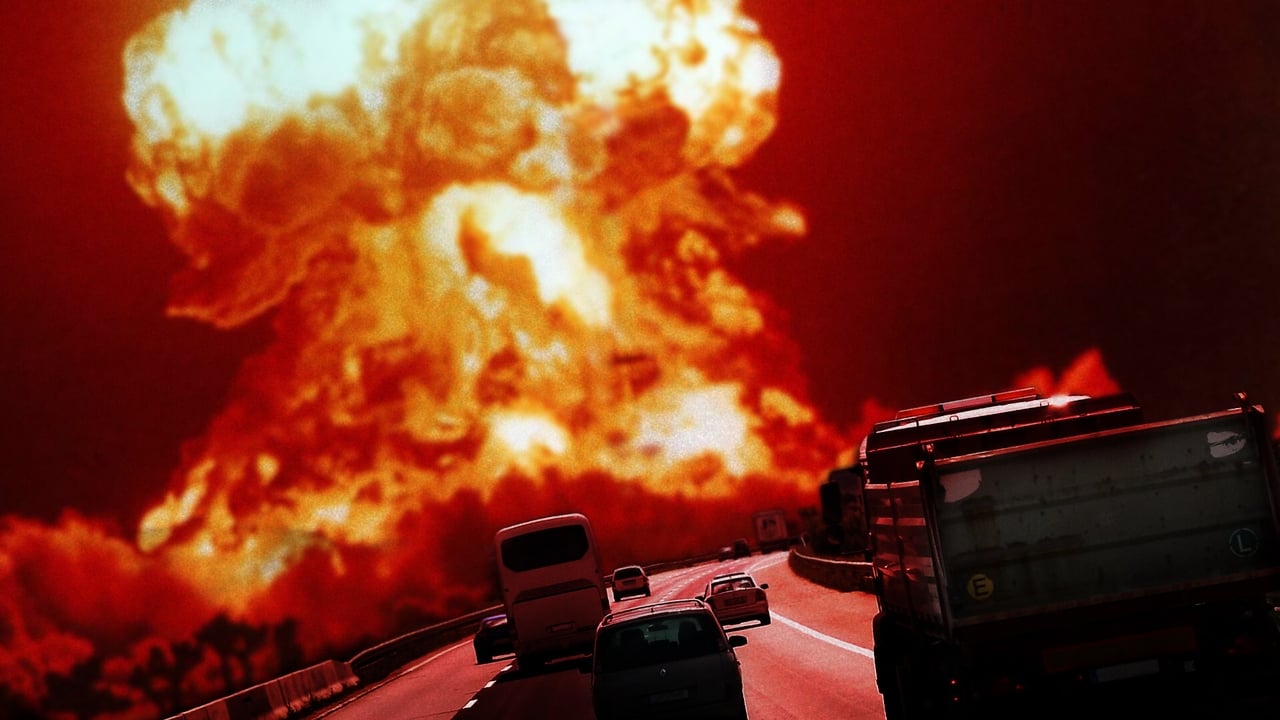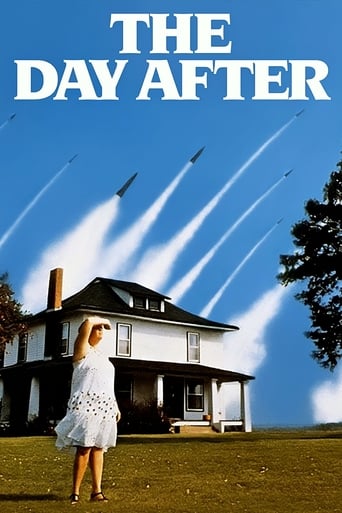

A graphic, disturbing film about the effects of a devastating nuclear holocaust on small-town residents of eastern Kansas.Although the film might be slightly dated today (2017), I would stress only slightly. The overall theme and message are unchanged. The real-life horror that would occur, even in the middle of America, with a full nuclear assault is still something that could occur.While categorized as "science fiction", this is really pretty spot on. People do not gain mutant powers and America does not invent some new device to nullify nuclear weapons. This is a very realistic what-if scenario.
... View More.......I was a full time college student and working full time at a close-to-home service station. Because of the ample TV previews acting as constant reminders of this upcoming TV movie promising to be, "a television event like never before", I brought a small television to work. IIRC, it was a Monday night and the movie started at 8:00 pm. I did NOT want to miss this movie. I had spent many years hearing Air Raid sirens blaring at exactly noon on the first Monday of each month. Any time I saw a movie or documentary dealing with the possibility of nuclear war, I remember also doing, "duck and cover", drills at the public school I attended back in the 60's.I will tell you what I remember most about the night this movie first aired. That night the movie was first shown, we did not sell a single gallon of gas while the movie played. I remember commenting to one of my co-workers, " I would just bet you that this movie would give the Superbowl a run for its' money!"This movie dared to be explicit and it dared to provide as much in the way of historic accuracy predicting the post attack specific, minute details regarding the devastation at ground zero. Even the prediction of resultant property damage x-number of miles from ground zero was shown to be lesser when compared to the damage at ground zero. In other words, I think the makers of this movie did their homework. I would guess that they looked for and acquired ample special topic technical advisor's. Many years later when I was day-dreaming at work taking a moment to have a 1980's flashback, I recall having this movie come to mind. Right there and then, I wrote a note to myself on a carbon-type credit card imprinter paper, "find DVD entitled, "The Day After." Right after that moment, on the same piece of paper I also reminded myself to get the movies, "Dr. Strangelove, and how I learned to stop worrying and love the bomb", "Dawn's early light" and, "Failsafe". Faithfully submitted, A man in his 50's !
... View MoreIt was always "good" U.S.A. and "bad" U.S.S.R.Todays' counts: 0 Russian nuclear missiles in Europe.As of 2005, 180 tactical B61 nuclear bombs of the 480 U.S. nuclear weapons believed to be deployed in Europe fall under the nuclear sharing arrangement.[6] The weapons are stored within a vault in hardened aircraft shelters, using the USAF WS3 Weapon Storage and Security System. The delivery warplanes used are F-16s and Panavia Tornados.[7] What is funny? This: "The US is considering deploying missiles in Europe in response to an alleged nuclear treaty violation by Russia." So, once more: zero Russian nukes in Europe. 180 U.S. nukes in Europe and Russia is a nuclear threat.What if? – A good look at the Cold War and horrors of nuclear disaster 8/10 Author: SimonJack from United States"It may be hard for people born in the last few decades to grasp the time and circumstances of the Cold War. But, besides our experiences growing up under the very real threat of nuclear war in the 1950s and 1960s, many of us have met people who lived under Soviet oppression. Should we not trust their words and take their warnings to heart about such tyrannies? "Dear SimonJack: for me, life under the "Soviet oppression" is much more bearable than life under the todays' U.S. demoNcracy spread by bombs.Dear SimonJack: my life under the "oppresion" 14 September 2013
... View MoreWhen Americans talk about disturbing anti-nuclear films, the example most likely to come up is the 1983 ABC television movie The Day After. Although this film galvanized American discussion about nuclear warfare and even supposedly caused Ronald Reagan to rethink his nuclear stance, the film itself comes across as sanitized.Following a group of survivors in the lead up to and aftermath of a nuclear war, The Day After features a terrifying depiction of a nuclear explosion, probably the most convincing depiction in a film before Terminator 2. However, the effects of the attack, both in the immediate aftermath and weeks afterward, do not convey the true horror of nuclear war. American television was simply not ready for such gruesome detail.Take, for instance, the depiction of a post nuclear hospital. The hospital wards seem overcrowded and dimly lit but clean. Compare this with a more realistic depiction such as Threads, which shows operating tables caked with dried blood and people screaming while being operated on without anesthetic. Although there is reference to an epidemic breaking out among the patients and doctors, the depiction seems overly optimistic. A similar feel pervades the entire movie. Even when a character travels back to the ruins of Kansas City, the rubble appears to be clean rather than burnt and ashen.This problem is traceable to an American squeamishness regarding the depiction of realistic suffering and violence. If you compare The Day After with similarly themed British films, such as the aforementioned Threads or even 1965's The War Game, the level of detail in the UK films is far more disturbing. Threads is straight up nightmare fuel, while The War Game, despite lacking any real special effects, gives a far more depressing vision of the nuclear aftermath.The film benefits from a number of talented actors and performances. Jason Robards is good in the lead and has help from an excellent supporting cast. The special effects are also uniformly excellent for their time. Nevertheless, if you want to see a good anti-nuclear movie, stick with the Brits.
... View More